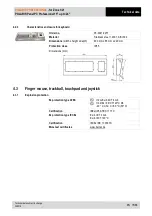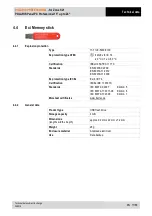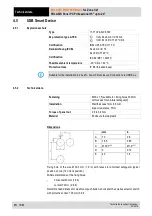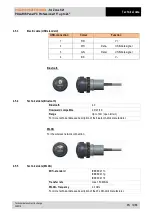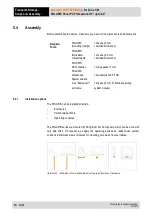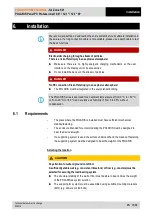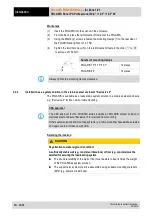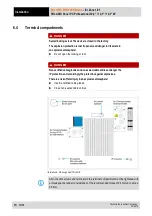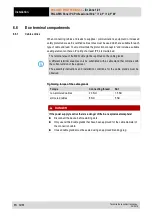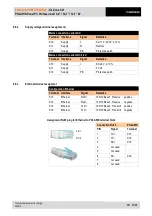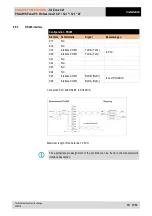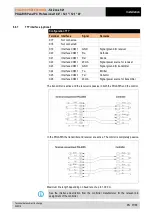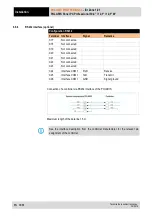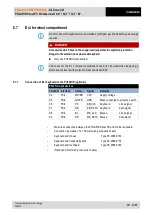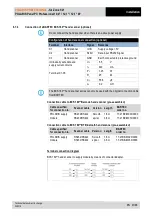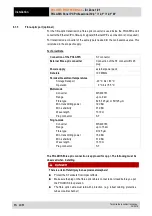
POLARIS PROFESSIONAL
- für Zone 1/21
POLARIS Panel PC Professional 10,4" / 12,1" / 12,1" W
Installation
Technical data subject to change.
04/2019
EN 29/68
6.3
Electrical installation
6.3.1
Installation guidelines
Only qualified personnel, i.e. trained electricians will have the required specialised
knowledge to be able to do all the electrical work.
Familiarity with and the technically perfect implementation of the safety instructions
described in this manual are preconditions for safe installation and commissioning.
–
The user may do only the wiring at the terminals that are accessible to him/her
(Ex i and Ex e terminal compartment).
–
Any unused cable glands on the Ex e terminal compartment should be closed
using an approved blanking plug.
–
More extensive dismantling work on the device may be done only by the
manufacturer or by persons authorised by the manufacturer for this purpose. The
device is factory-sealed. Never open it!
–
The equipotential bonding connection point must be connected to the equipotential
bonding conductor in the hazardous area. Since the intrinsically safe circuits are
galvanically connected to earth, equipotential bonding is required throughout the
entire installation of the intrinsically safe circuits.
–
The safety and accident prevention regulations applicable to the respective
individual case must be observed.
–
Devices must be properly installed first before they may be operated.
–
It must be possible at all times to disconnect the devices from the voltage supply
(in fixed installations by means of an all-pole mains isolating switch or fuse).
–
It must be ensured that the supply voltage agrees with the specifications in this
user manual and the tolerances must be observed. Use smoothed direct current.
–
Malfunctioning cannot be ruled out if levels exceed or drop below the specified
tolerances.
–
If there is a power failure or if the power supply is interrupted, make sure the
system has not been put into a dangerous, undefined condition.
–
EMERGENCY STOP mechanisms must remain effective throughout all modes and
states of operation.
–
Connection cables (particularly data transmission cables) must be selected and
laid in a way that ensures that capacitive and inductive interference will not have
any adverse effect on the equipment. Appropriate measures must be taken to
handle line interruptions to prevent any undefined states occurring.
–
Wherever malfunctioning can cause material damage or personal injuries,
additional external safety circuits must be provided (e.g. limit switch, mechanical
interlocking devices etc.).

